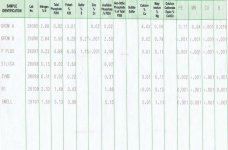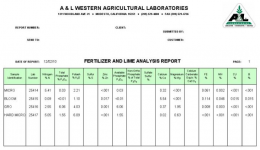Sulfur is tested for by the by the California labs for product registration regardless of the amount contained. The test results would not be supplied by the registry if they did not do the testing for sulfur and the sulfur percentage is shown within the data based registry for levels of sulfur for 1% or more. Just what do you consider a small fine?
While neither state does a break down of the nitrogen into urea, NO3 N and NH4 N it is also very likely that the fertilizer manufacturers do not do so either. They likely just calculate the contribution of the different forms of nitrogen based upon the salts they use. Few nutrient formulas that contain sulfur contain less than 1% if sulfur has been purposely supplied through a salt containing sulfur..
BS Fatman (you make this shit up as you go along). Tell you what I will do though just so people don't get fed more bullshit on this forum is dig up the info when I have time and post lab tests and requirements. Basically the regs are this (very simple). Unless a product contains 1% or more S the S does not need to be listed with the CDFA. Here's a test I have from this lab but I have several more that I will wade through just to ensure that people get the right 'facts'. I will also have a look on their site because I think that they state the 1% reg. You clearly know little about how this works. Nevertheless this doesn't stop you getting on forums and making out you do.



